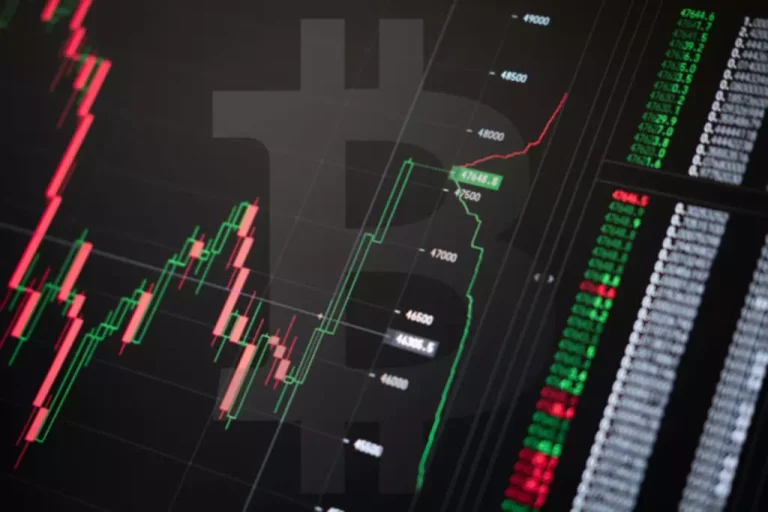Unlike stock trading, the Forex market is relatively decentralized, which allows many companies to use a fundamentally different model of operation, which leads to a conflict of interest between the trader and the company. This model is somewhat similar to the one used by betting companies, i.e., the liquidity provider/supplier is the broker himself. Applying this, the Forex broker earns only on losing traders’ positions. Accordingly, any profit of the client will be a loss for the company. Obviously, in this case, the broker does not want to share his profits with anyone and will try to complicate the work of the trader, who trades on the plus side by various manipulations, minimizing his chances to earn.
Speaking about my professional activities, I can say that I have always been attracted to the study of foreign languages, which later led me to the study of translation and linguistics. Seasoned copywriter with a focused expertise in crypto and fintech, adept at translating complex industry jargon into clear, engaging content. Driven by my mission to illuminate the intricacies of the crypto and fintech industries, my commitment is to create and deliver content that educates, engages, and empowers.
Position trading: definitions, pros and cons. Examples of position trading strategies
The broker receives its commission irrespective of whether traders earn or lose their money. While perspectively both traders and the b book vs a book broker are interested in the successful trading. The more transactions traders make, the more commission their broker receives.
In the event that the market moves against the broker, the broker will run all of the losses, and vice versa. Commission is one of the broker’s sources of income in the A-book model. Even though the prices of entry and exit were the same for the broker and their client, the client pays commissions to the broker for the execution. Usually, this is calculated as volume-based (e.g. $X per $1M or lot). Client orders are delivered to the market in two various ways via distinct types of broker operating technologies.

If a B-book broker offers high leverage, it’s usually because they want you to blow your account – because they want your money. You can see here how the misalignment of incentives can be a problem. Having a standardised approach to closing out a retail trader’s positions if their trades are going against them so severely that they risk blowing their account is a perfectly logical measure.
Well, if your Forex broker purely B books you, without giving you slippage, then it is actually good for you! You can deploy strategies that won’t work on A book brokers such as news trading. If you hedge risks and use a hybrid model and a bridge, you probably need to control trading activity especially in an important market news period to control financial risk. Daily up-to-date market analysis available in the trader’s room might increase the trading volumes of your company, resulting in more potential profit. This tool is already integrated into the UpTrader Forex CRM, however, only a few of our clients use it for additional sales.
Brokers accept their clients’ trades and automatically send them to the liquidity provider. A-book brokers earn independently of market movements, profiting from commissions and spreads, also shared between the liquidity provider and the trading platform. The foreign currency market is a continuously operating marketplace, open 24 hours per day, 5 days a week.
MORE FOREX BROKERS
A B-Book broker prefers that those profits are passed around more evenly among its customer base since it allows them to continue pocketing the spread from a larger pool of traders. Also, this reduces the capital that a broker needs to set aside (which would be used to pay out winning trades) because its customers are essentially, “making a market” for each other. This allows the broker to offset trades with each other rather than exposing itself to market risk. They set their own risk limits, and if their risk limit happens to be their entire account, then there’s a non-negligible chance they will blow their entire account.
If the client makes money, the broker loses it, and vice versa. This model is recommended for experienced industry professionals and not for novice brokers who need a larger budget to cover potential client profits (when the market is favorable to traders) in the first few months of brokering. This article will tell you what A-book & B-book brokers models are all about. In addition, you will learn what advantages and disadvantages they have, as well as how they make money. But luckily trading is such an immensely competitive environment that most trading costs have been whittled down to a fraction of your profits whether you’re a B-book trader or an A-book trader – so it really doesn’t matter. You won’t be paying more to use an A-book broker than a B-book broker.
That’s where a special software comes into a play, tracking the amount of a trader’s deposit, the leverage used, the risk level of each transaction, the use or non-use of protective stops. All this data helps the broker to determine which of the 2 models (A-Book or B-Book) to use for executing an order. A-Book model is the business model of a broker where all trader’s orders are forwarded directly to the forex liquidity provider, who then redirects them to the interbank market. In other words, the entire financial market supply-chain understands very well that retailers are going to lose, and all intermediaries are eager to be the retail trader’s counterparty, including exchanges and brokers. I wouldn’t say that the STP or the DMA are the best forex broker models. Every model has its pros and cons, in terms of order execution speed, trading costs and slippages.

As a result, there is zero slippage, and news breakouts can be very profitable. Withdrawal control is a standard and necessary procedure for financial broker security, but this doesn’t have to prevent traders from withdrawing and depositing money quickly. For example, you can allow to withdraw all requests under $100 without additional checks. It means any withdrawal under $100 will occur automatically, but in a case you want to manually approve any amount, you can do it.
Are Gamers The Future of Crypto and Forex Trading
C-book is a term that is often used to refer to a risk management technique that differs from A or B-booking. The most common form of C-book risk management is the partial covering of a client order. Brokers can hedge the risk partially to mitigate the possible impact, but not eliminate it completely, choosing instead to manage the residual risk in the hope to profit from market movements. This strategy suggests that the moment the broker receives a trade from their client, the broker will enter into another trade with a counterparty in the same direction as their client.
- Milena also has experience and education in the TV industry, which help other B2Broker projects thrive.
- This could be a mark-up in spread, commission or financing, but essentially the broker is profiting by charging more than it costs them to acquire the asset in question.
- What B-Book brokers have going for them is that they can offer better trade execution prices because they can immediately fill orders, which can be seen as beneficial to the trader.
- They want to see you become profitable – because they want you to trade bigger, longer, and consistently, so that they make more money from the fees they charge you.
- You will also learn the difference between DD and NDD brokers and get acquainted with NDD order processing sub- types – STP, ECN, DMA, and MTF.
Every time an A-Book broker sees a losing customer, it is potential profit that is now lost forever. These customers will grow their account balance over time, allowing them to open bigger and bigger position sizes. If a broker has just one customer and uses B-Book execution, then obviously, it wouldn’t want the trades that its ONLY customer makes to win. It can even be more lucrative if brokers can get their customers to deposit even larger amounts.
Ejecución de libro A contra ejecución de libro B: El lado oscuro de la industria del trading online
Neither A-Book nor B-Book model guarantees a successful business or a profitable trade. These models are just tools for doing business, and your personal benefit depends only on how professional you can use these tools. There are two types of broker operating technologies – A-Book and B-Book models, which differ in the way client orders are brought to the market. Likewise, many industry outsiders may have the belief that HFT (High-Frequency Trading) is some kind of evolution from LFT (Low-Frequency Trading).
Retail traders can use these markets to bet on the movement of currency prices through services provided by Forex brokerages. Bigger players in the Forex market include corporations, banks, and financial service providers — which makes this marketplace an integral piece of today’s global economy. It is estimated that more than 6 trillion US dollars are traded https://www.xcritical.in/ on the foreign exchange market every day. In fact, Forex brokers manage only a small percentage of this industry. The majority of Forex trades take place between currency pairs from the G10 nations, which are the most economically developed countries. The most common currency pairs traded are the US dollar, euro, pound sterling, Japanese yen, and Swiss franc.
Why I Quit Oanda & Moved to Global Prime
However, trading using a B-Book broker may turn out to be advantageous for traders. For instance, traders might obtain full guarantees for their deals. Additionally, since the broker serves as the market maker, investors typically receive decent processing of their orders even during periods of low liquidity. A B-Book model provides constant spreads regardless of whether you trade during busy market hours or off-market hours, which is yet another solid reason to use a B-Book broker. When using the B-Book Forex model, you usually pay a predetermined spread each time you initiate or exit a transaction.
